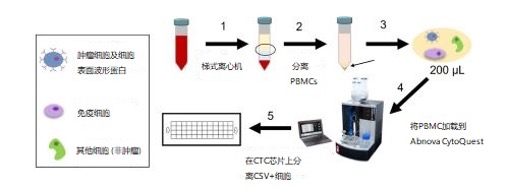Automated Liquid Biopsy Detects Brain Tumor Cells in Children
January 4, 2024
Source: drugdu
 358
358

Brain and other central nervous system (CNS) cancers are the primary cause of cancer-related deaths in children, ranking as the second most prevalent form of childhood cancer following leukemia. For treating CNS tumors, healthcare professionals traditionally rely on a series of magnetic resonance imaging (MRI) scans to gauge the effectiveness of treatments such as surgery, chemotherapy, and radiation. However, MRI scans have limitations, particularly in detecting microscopic diseases that might signal residual or recurring cancer cells. To bridge this gap, scientists have been on a quest to identify reliable, tumor-specific biomarkers. Prior research in adults has demonstrated that primary tumors release circulating tumor cells (CTCs) into the bloodstream, suggesting that CTCs could serve as dependable biomarkers for CNS tumors.
A recent study conducted by researchers at the University of Texas MD Anderson Cancer Center (Houston, TX, USA) aimed to determine the effectiveness of a liquid biopsy tool designed to detect vimentin, a structural protein present on the surface of many cancer cells, in capturing and isolating CTCs from the blood samples of children with CNS tumors. The study also aimed to assess whether an automated version of the CTC capture method would enhance their previously established manual technique. The liquid biopsy method employed in this study isolates cells exhibiting cell-surface vimentin (CSV) to segregate CTCs from the patient's blood, offering insights into the patient's cancer and the progress of their treatment. Previous findings indicated the efficacy of the manual liquid biopsy approach in identifying CTCs across various cancers in adults.
The goal of the study was to automate the process to increase its sensitivity and the capture of CTCs from CNS tumors. The study involved 62 participants, including 58 children diagnosed with CNS tumors and four healthy adolescents serving as a comparison group. The team collected blood samples from all participants to isolate and capture tumor cells. After eliminating denser cells unlikely to contain CTCs, the samples were processed through a machine fitted with a microchip coated with an antibody that recognizes CSV. This coating allowed CTCs to adhere to the chip while other cells were washed away. The adhered cells were then stained for counting and identification.
The automated method was successful in capturing CTCs in 50 out of the 58 pediatric patients (86%). The study found no significant variation in CTC detection based on patient demographics or cancer therapy. The automated CSV-CTC capture tool proved highly accurate in identifying patients with and without CNS tumor cells. Furthermore, when compared to the prior manual process, the automated method enhanced the sensitivity of CTC detection by approximately 10% and reduced the time required for sample processing. The researchers also sought to detect a specific mutation linked to poorer outcomes in patients with midline gliomas, successfully identifying it in 75% of the samples. While further extensive research is necessary to corroborate these findings, the detection of CTCs in patients with CNS tumors holds promise as a tool for confirming diagnoses of inoperable or difficult-to-biopsy tumors like brainstem gliomas and optic pathway gliomas.
“This is the first study to demonstrate the detection of CTCs using CSV as a biomarker in pediatric CNS tumors, including ones that are malignant and have metastasized,” said Shulin Li, Ph.D., principal investigator of this study and professor of pediatrics at UT Anderson Cancer Center.
“This study also showed the value of automating the CSV-CTC capture process with a microchip. This tool could make it easier to monitor patients’ response to treatment and identify cancer relapse earlier,” added Shawn Mulvaney, Ph.D., a health science administrator in the NIBIB Division of Applied Science & Technology (Bioimaging).
Source:
https://www.labmedica.com/molecular-diagnostics/articles/294799777/automated-liquid-biopsy-detects-brain-tumor-cells-in-children.html
Read more on
- Multiple batches of quadrivalent influenza virus split vaccine have been sub-packaged and submitted for lot release approval; expected to be released to the market soon after approval December 12, 2025
- Ab&B Bio-Tech CO., LTD. JS Lyophilized Human Rabies Vaccine Initiates Phase III Clinical Trials December 12, 2025
- The ‘Sweetest’ HPV Vaccine Market is Gone | Haibin Interview December 12, 2025
- InnoCare Pharma announced that its first independently developed next-generation TRK inhibitor, zoletrazinib, has been approved for marketing in China December 12, 2025
- Is PD-1/VEGF dual antibody + ADC becoming the standard configuration? December 12, 2025
your submission has already been received.
OK
Subscribe
Please enter a valid Email address!
Submit
The most relevant industry news & insight will be sent to you every two weeks.



